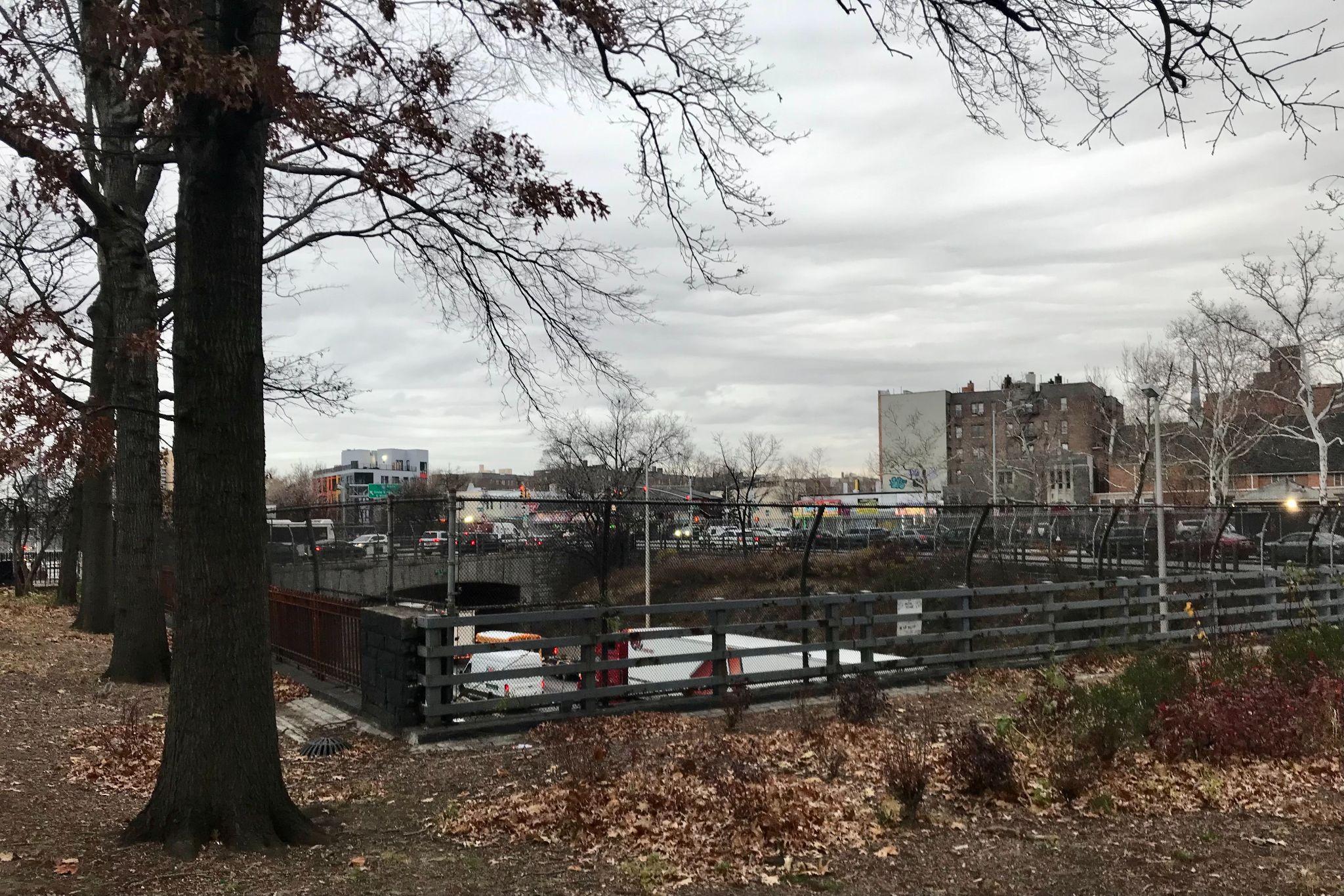The long sought-after goal to “cap” the Cross Bronx Expressway by building parks over it has found new life, with Sen. Chuck Schumer and other New York politicians throwing their support behind using the recently approved $1 trillion infrastructure plan to fund it.
The politicians said at a Nov. 9 press conference that capping the Cross Bronx would improve hundreds of thousands of lives throughout the borough by reducing air pollution, building park space, and connecting communities that the road divides. But challenges remain.
A $2 million feasibility study will determine the potential cost and impact of the project. Then the politicians must secure funds for the project, which they say will be paid for with federal money. Proponents and skeptics worry that rents and property taxes will increase, forcing local residents out so that wealthier people can move in.
Nilka Martell, a longtime advocate for capping the highway and founder of environmental nonprofit Loving the Bronx, sees capping as an opportunity to benefit the people who have suffered from asthma and other health issues caused by living near the congested highway.
“How do we ensure that the people that currently live along the Cross Bronx, who have been impacted by this, how do we ensure that they get to stay and that they can benefit from a project of this magnitude?” Martell said.
The 6.5-mile Cross Bronx Expressway is one of the busiest highways in America, according to transportation analytics company INRIX. The current plan would cap, or deck, all of the highway’s below-ground sections, about 2.5 miles. Capping reduces pollution by filtering exhaust before releasing it into the air. Building parks on the capped portion will reconnect communities and add green space in an area that needs it.
The plan would add more than 1 million square feet of park space to the Bronx, according to a study in the American Journal of Public Health.
Rep. Richie Torres, whose district includes Hunts Point and Mott Haven, played a key role in advocating for the project, highlighting his own experience growing up in the borough’s Asthma Alley.
“As a child of the Bronx, my childhood was often an endless stream of asthma attacks and asthma hospitalizations,” Torres said. “We have to send a message that clean air is not a privilege, but a right.”
Schumer focused on the economic benefits of the plan, saying, “This is going to create tens of thousands of new good-paying jobs. And we want to make sure people in this community are trained, because we’re going to need many more workers.”
He also suggested that sound barriers along the above-ground portions could improve conditions for residents near the parts of the highway that can’t be capped.
Schumer said that the $1 billion project will be funded by the recently passed infrastructure bill and the Build Back Better bill, which has yet to make it through Congress. The two bills will allocate at least $12 billion to projects like capping highways, according to Schumer.
Some infrastructure experts argue that the project will cost much more than Schumer’s suggested price tag, even enough to threaten the project’s eventual completion.
Liam Blank, a policy manager at the Tri-State Transportation Campaign, said that the Cross-Bronx’s design and congestion will make the project more expensive.
“It wasn’t built with the intention of ever being capped over,” Blank said in reference to the Cross Bronx. “As soon as you start disrupting traffic and having to build around one of the most congested parts of highway in the country, that automatically elevates the cost substantially.”
Blank added that the cost of diverting traffic for construction could delay the project by years. There currently is no timeline for completing the project. Still, Blank expressed optimism about the project’s impact: “You really could be creating a catalyst for economic development along that corridor.”
One widely-shared concern is that investment in parks will raise property taxes and rents, possibly leading to gentrification throughout the neighborhoods along the Cross Bronx.
Martell contends that will depend on the state’s and city’s willingness to work with the community to ensure that the project is done in the best interests of the current residents.
“There are different programs on the state level to ensure that when property values go up, homeowners are able to stay with their properties, but there’s nothing about renters,” Martell said. Still, she is confident that the community can find a solution that will work for everyone, despite the challenges.
Martell fought for much of the past five years to cap the highway, but she said that President Joe Biden’s emphasis on infrastructure spending meant that now was the time. With the support of Assemblymember Karines Reyes and Torres, two health-conscious Bronx politicians, the fight may finally have been won.
“I’m just hoping that, over time, people can see that this is a possibility, and maybe it can serve as a catalyst for other highways in the Bronx, and throughout New York City,” Martell said.

